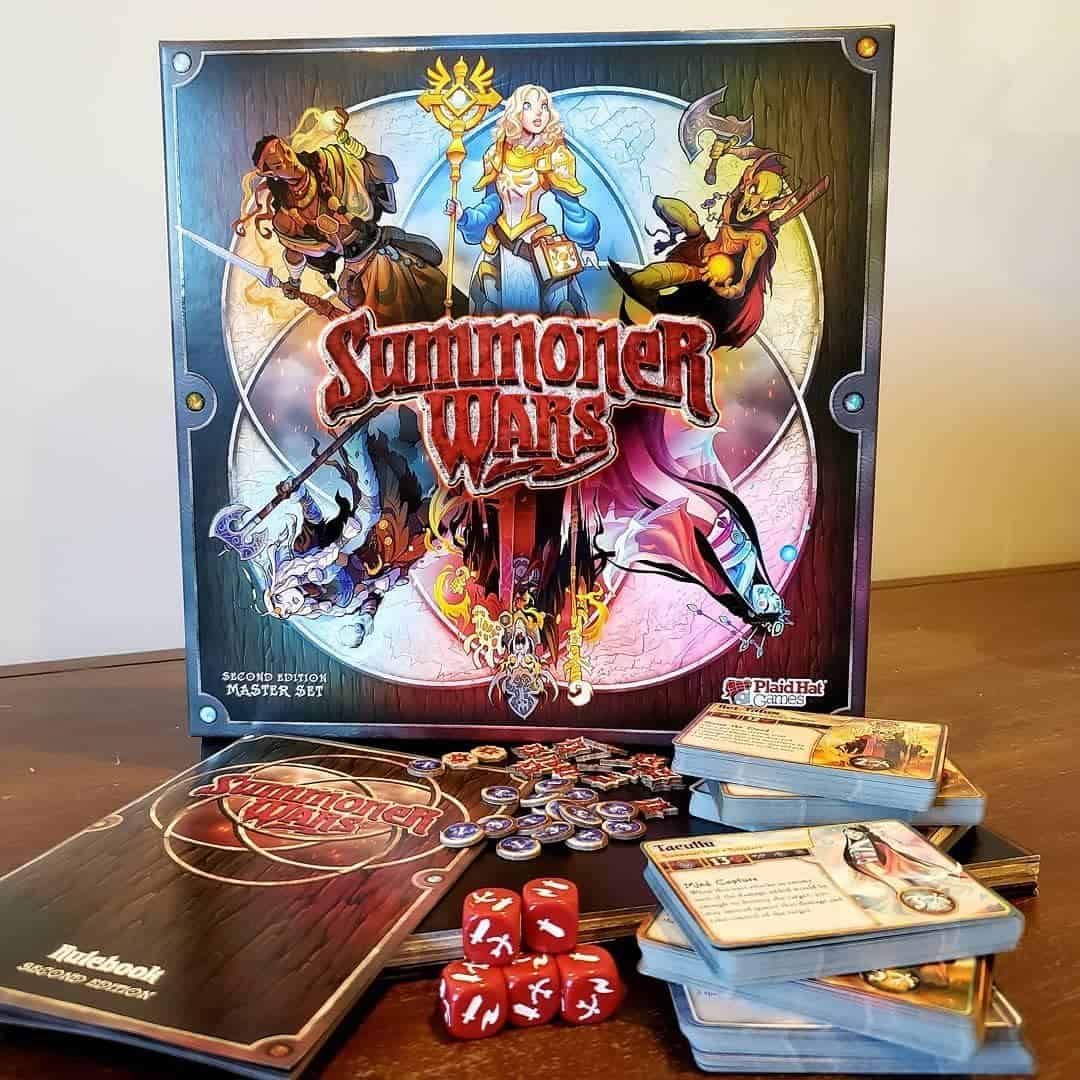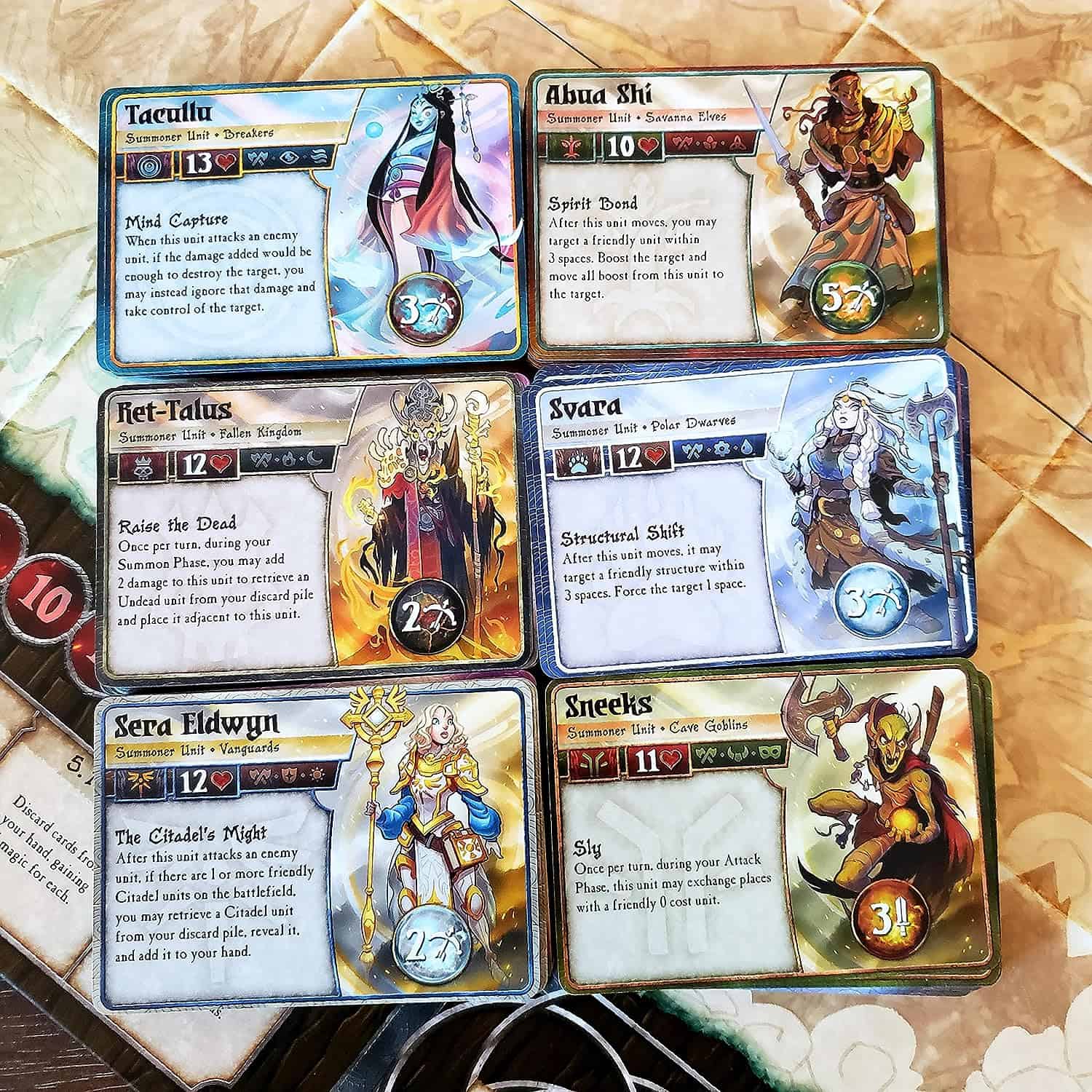
Summoner Wars is a tactical card game that casts you as a cunning summoner leading a unique faction into a battle for supremacy. As a player, each card you play represents a unit, a spell, or even your summoner’s presence on the battlefield.
Your objective is to maneuver your forces, strategically use your cards, and outmaneuver your opponent’s summoner to secure victory. The game offers a perfect blend of deck-building, resource management, and battlefield tactics, making every match a thrilling puzzle to solve.
The game’s genius lies in its simplicity, yet it boasts incredible depth, allowing players to craft their strategies and adapt to various opponents and scenarios. Whether you prefer the swiftness of the Jungle Elves or the relentless undead hordes of the Fallen Kingdom, “Summoner Wars” offers diverse factions, each with its own playstyle and strengths.

The goal of Summoner Wars is to eliminate your opponent’s summoner or reduce their summoner’s health to zero. Players achieve this by strategically deploying units, casting spells, and managing their resources.

Summoner Wars is played over a series of rounds, each consisting of several phases:
Combat: Combat occurs when one of your units attacks an opponent’s unit or summoner. Roll a combat die and compare the result to the target’s defense value. If the roll equals or exceeds the defense value, the target receives a wound marker. Units can only attack once per turn.
Winning the Game: The game typically ends when one summoner is defeated (reaches a certain number of wound markers), or one player fulfills a specific scenario condition. The player who meets the victory condition first wins the game.

Here’s an overview of some of the main factions and their associated playstyles which are available in the base game:
For the official rules, see the link below:

· Know Your Faction: Understand the strengths and weaknesses of your chosen faction. Each faction has a unique playstyle and abilities. Tailor your strategy to maximize your faction’s advantages.
· Efficient Card Use: Manage your cards wisely. Don’t overspend your magic points on summoning units or casting spells too quickly. Balance between summoning units, reinforcing, and casting events.
· Positioning is Key: The positioning of your units is critical. Place them strategically to control the battlefield, protect your summoner, and set up for future attacks. Consider both offensive and defensive positioning.
· Protect Your Summoner: Your summoner is the key to victory. Keep them safe by using walls, units, and strategic placement. Losing your summoner can be a game-ending setback.
· Use Wall Cards Strategically: Walls are not just for defense. They can be used to create chokepoints, control movement, and block enemy units. Use them strategically to shape the battlefield to your advantage.
· Plan Ahead: Think several turns ahead. Consider how your actions will affect future rounds and anticipate your opponent’s moves. This forward-thinking can help you maintain control of the game.
· Adapt to Your Opponent: Pay attention to your opponent’s strategy and adapt accordingly. If they are playing aggressively, focus on defense and counterattacks. If they are building a strong defense, look for weaknesses to exploit.
· Control the Magic Pile: Units in the magic pile can be summoned again. Keep units that you want to bring back in this pile. Use abilities or events that move units to and from the magic pile strategically.
· Don’t Waste Actions: Every action matters. Avoid moving units aimlessly or attacking without a clear plan. Be efficient in your movements and attacks.
· Be Mindful of Card Economy: Your hand size is limited. Discard cards that are less relevant to your current strategy to draw more useful ones. Card management is crucial.
· Psychological Warfare: Keep your opponent guessing. Conceal your plans and intentions as much as possible. A surprise attack or a well-timed event card can be a game-changer.
· Focus on Objectives: Understand the victory conditions of the scenario or game variant you’re playing. Prioritize actions and unit placement that work toward achieving those objectives.